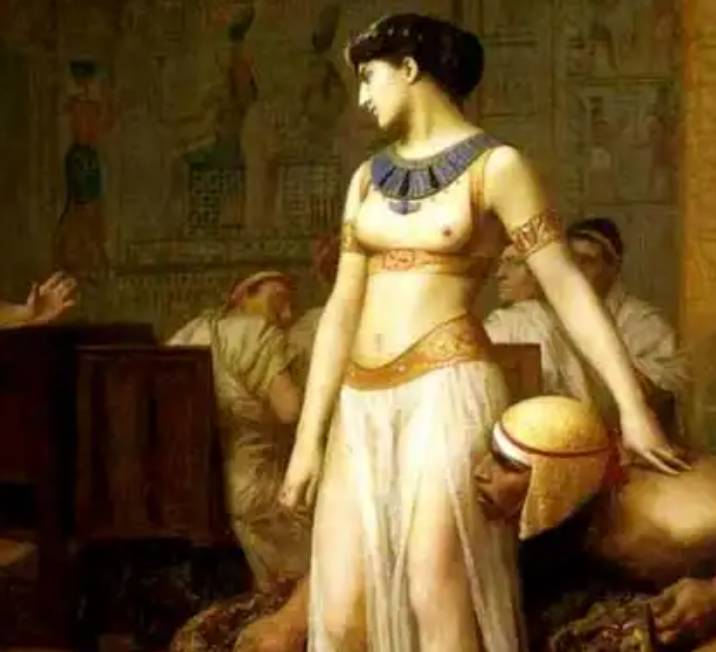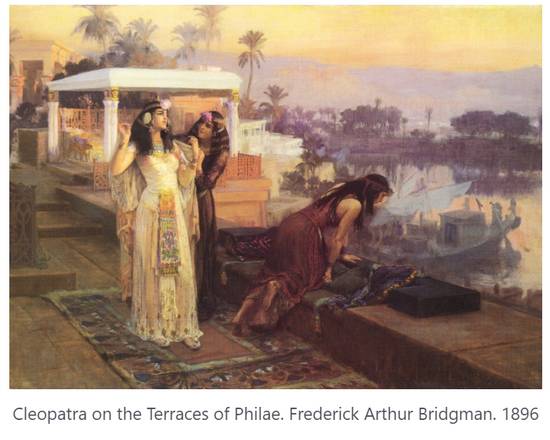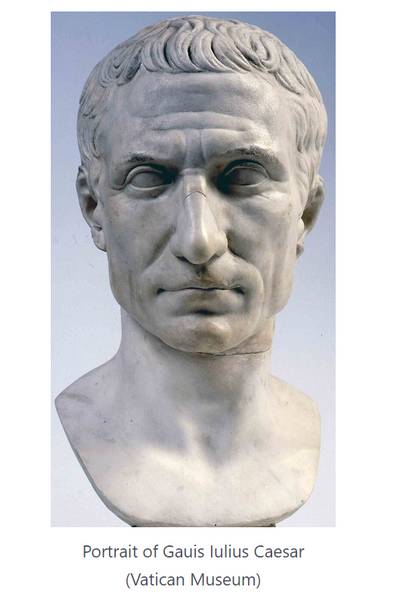The Life of Cleopatra: Seductress and Intelligent Leader from Turgut Can's blog
 Cleopatra is known to be one of the most beautiful monarchs in history. However, it must be noted that she was more than just her beauty.
Cleopatra is known to be one of the most beautiful monarchs in history. However, it must be noted that she was more than just her beauty.
She was an influential leader and the last Hellenic ruler in Egypt. After her reign, Egypt became a province of the Roman Empire.
Cleopatra was both loved and hated in Egypt. One thing that endeared Egyptians was her effort to learn the language while ruling the country.
The other Ptolemaic rulers never did. They ruled Egypt from the largely Greek city of Alexandria.
Let’s look at the remarkable life of Cleopatra, a leader known for her beauty, dalliances with other powerful leaders, and strategic mind.
Early Life
Cleopatra was born to Ptolemy XII, the ruling Ptolemaic pharaoh, in 69 BCE (Before the Common Era).
She had an older sister, Berenice IV Epiphaneia, a younger sister, Arsinoe IV, and brothers, Ptolemy XIII Theos Philopator and Ptolemy XIV. It is unclear who their mothers were.
They were all descendants of Ptolemy I Soter. He was the founder of the Ptolemaic dynasty in 323 BCE and one of Alexander the Great’s generals.
Upon the death of Ptolemy XII, also known as Auletes, in 51 BCE, the kingdom was left to then-18-year-old Cleopatra and her 10-year-old brother Ptolemy XIII. They were designated as joint heirs by their father.
They were supposed to be equals, but Cleopatra wanted to rule alone. However, Ptolemy XIII had very powerful allies and drove Cleopatra out of Egypt. She fled to Syria in 49 BCE.
Cleopatra and Julius Caesar
Many would reduce Cleopatra and Julius Caesar’s relationship to that of a seductress and a great Roman general. Cleopatra was more than that, as she raised a powerful army during her exile.
Julius Caesar was part of the triumvirate that helped make Rome a superpower in the first century BCE. He and fellow generals Gnaeus Pompeious Magnus (better known as Pompey) and Marcus Licinius Crassus slowly invaded different parts of the world to expand the territories of the Roman Empire.
They had set their sights on Egypt next.
The Romans already had some power in Egypt. Cleopatra’s father, Ptolemy XII, had paid Julius Caesar and Pompey a large sum of money to recognize him as the true ruler.
Egypt became an ally of Rome. Ptolemy XII didn’t bat an eye when the Romans moved into Cyprus, which was Egyptian territory. But the Egyptians were furious at the invasion—this began the fall of the Ptolemaic dynasty.
Julius Caesar and Pompey eventually had a falling out. Ptolemy XIII sided with Julius Caesar in the civil war and ordered the assassination of Pompey. Julius Caesar arrived in Alexandria, and Cleopatra snuck into the palace to corner the general and plead her case.
In various depictions of Cleopatra’s life, one of the most famous scenes was always her seduction of Julius Caesar. She reportedly asked her servant Apollodoros to wrap her in a carpet and present it to the general in his room. This way, they evaded suspicion from Ptolemy XIII’s people.
Cleopatra had already raised an army of mercenaries and just needed a strong leader like Julius Caesar to be in her corner. The tandem of Julius Caesar and Cleopatra successfully dethroned Ptolemy XIII, who fled Alexandria.
Julius Caesar and Cleopatra settled as unpopular leaders in Egypt. Cleopatra sat on the throne with younger brother Ptolemy XIV, who was 12 years old. They were married and served as co-regents.
Julius Caesar stayed in Egypt with Cleopatra, who gave birth to Ptolemy Caesar in 47 BCE. He was never confirmed to be Julius Caesar’s son, but Egyptians called him Caesarion or “Little Caesar.” Shortly after Caesarion’s birth, Julius Caesar returned to rule in Rome.
Reincarnation of Goddess Isis
Ptolemy XIV was murdered when Caesarion was just three years old. Many believed Cleopatra was behind the assassination so her son would sit on the throne with her as co-regent.
By this time, Cleopatra had fashioned herself after the goddess Isis, whose name means Queen of the Throne. According to ancient Egyptian myth, Isis and her husband Osiris were the first rulers of the world.
Many Egyptian temples had been erected in her honor. She was always depicted as an incredibly beautiful woman and mother.
Cleopatra would often dress as Isis during important celebrations. Whenever she makes a ruling, she would phrase it as something the goddess willed or wanted.
This is why Egyptians said that Cleopatra was the reincarnation of Isis.
Cleopatra and Marc Antony
Egypt was enjoying relative peace with Caesarion on the throne. However, the country wasn’t doing well economically.
The Nile River would often flood, killing crops and resulting in wide-ranging hunger. The country was frustrated with the leadership.
Meanwhile, in Rome, two factions were courting the support of Egypt by 42 BCE. Julius Caesar, who had become a dictator, was murdered in 44 BCE.
This left behind a second triumvirate (Mark Antony, Octavian, and Lepidus) to lead on his behalf. The group sought Cleopatra’s support, while the other side was led by Cassius and Brutus, Julius Caesar’s assassin.
Cleopatra gave her support to Caesar’s triumvirate. The support led to an overwhelming victory that saw Mark Antony, Octavian, and Lepidus gain power in Rome.
In return for Egypt’s support, Mark Antony promised to protect Cleopatra and Caesarion’s throne. And slowly, Mark Antony fell for Cleopatra’s charms.
The two began an affair in 41 BCE when they met to solidify their partnership—Mark Antony was married to his third wife, Fulvia. Aside from the affair, Cleopatra and Mark Antony also formed the Inimitable Livers, a secret drinking society.
In 40 BCE, Cleopatra gave birth to twins Alexander Helios and Cleopatra Selene. Mark Antony was not there for the birth. He was forced to return to Rome because of troubles with his then-wife’s quarrel with Octavian over their rule.
Fulvia died of an illness just as Mark Antony waged a full-blown war against Octavian in what is sometimes referred to as Fulvia’s Civil War. Peace was restored, but Mark Antony was forced to marry Octavia Minor, Octavian’s younger sister, to broker peace.
Mark Antony returned to Egypt in 37 BCE to be with Cleopatra. They had a son, Ptolemy Philadelphus, a year later.
While Julius Caesar and Cleopatra were discreet in their relationship, the queen and Mark Antony were not. They would often dress up as Greco-Egyptian god Dionysus-Osiris and goddess Venus-Isis during special occasions.
Their three children were considered legitimate children and heirs to the Egyptian throne.
Their partnership had political repercussions, too. Cleopatra found her footing in her country, and Egypt became prosperous.
She was able to help fund Mark Antony’s campaign to conquer Parthia. Egypt also saw the return of Crete, Cyrenaica, Cyprus, Jericho, and parts of Lebanon and Syria to the realm.
Donations of Alexandria
The boldest act that Cleopatra and Mark Antony did is known as Donations of Alexandria in 34 BCE. It was a political act and celebration after Mark Antony’s successful campaign against Armenia.
The Romans thought the triumph was in the name of Rome because Mark Antony was still a Roman leader. It turned out to be a campaign for Egypt.
Dressed in their Osiris and Iris garb, the couple awarded territories to their children. Caesarion was declared King of Kings and Cleopatra as Queen of Kings.
The following were the distributed territories:
Caesarion – joint ruler of Egypt
Alexander Helios – Great King of Seleucid
Cleopatra Selene – Queen of Crete and Cyrenaica
Ptolemy Philadelphus – King of Syria and Asia Minor
Octavian thought Cleopatra had total control over Mark Antony and proclaimed war against them. That was the start of the fall of Cleopatra and the Ptolemaic Dynasty along with it.
Battle of Actium: The End of an Era
The Battle of Actium began on September 2, 31 BCE. The forces of Mark Antony and Cleopatra on one side and Octavian on the other met in the Ionian Sea of Actium (Ancient Greece).
There were reports that Antony and Cleopatra were not keen on fighting and poised to flee. Some of their soldiers deserted after hearing this.
Antony and Cleopatra’s ships turned around and headed back to Alexandria while the remaining forces surrendered to Octavian. This battle is often recognized as the birth of the Roman Empire.
Octavian’s forces arrived in Alexandria in July 30 BCE, and Mark Antony sprung into action. Despite a small victory, most of his soldiers defected.
He could not escape Alexandria, and rumors spread that Cleopatra had committed suicide. Mark Antony stabbed himself in reaction and then was brought to Cleopatra, where he died in her arms.
Octavian arrived in Alexandria and presented Cleopatra with terms of surrender. Cleopatra agreed and asked for time to settle her affairs. But Cleopatra was smart enough to know she would never be treated well as a Roman prisoner.
On August 30, 30 BCE, Cleopatra perished when she allowed a venomous snake to bite her.
Dramatic Until the End
Nobody ruled like Cleopatra. She has long been one of the most popular leaders in history—she was beautiful, intelligent, and a brilliant ruler.
She was the embodiment of an empowered woman thousands of years ago. No one can deny the power she wielded and the legacy she left behind.





The Wall
I am happy I'm glad to have you as a friend I will appreciate you sending me a friend request so that we can get to know each other more and we can be good friends(h)